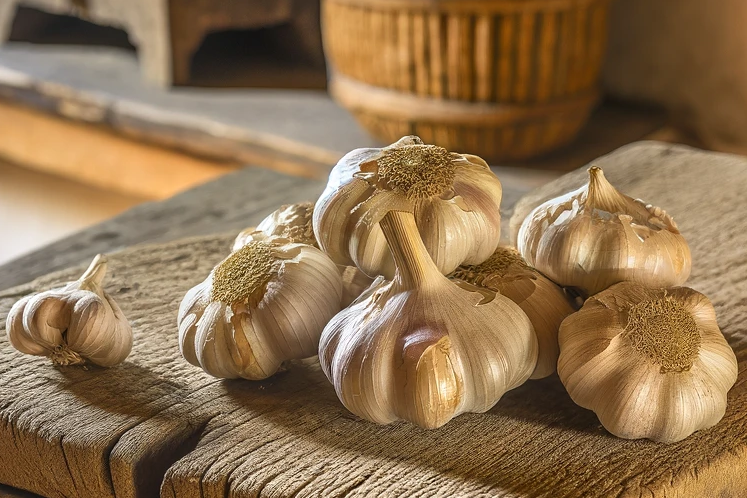Diallyl disulfide

What is diallyl disulphide?
Diallyl disulphide is an organic sulphur compound that is mainly found in garlic and in smaller quantities in onions. It is responsible for the characteristic smell and taste of these vegetables. Chemically speaking, it belongs to the group of disulphides, which contain two sulphur atoms bonded to two allyl groups. In the human diet, diallyl disulfide is valued for its health-promoting properties, including its ability to support the cardiovascular system and provide antioxidant effects.
Effects on dogs
Although diallyl disulfide and other sulfur compounds in garlic and onions may be beneficial to humans, they pose a serious risk to dogs. The main safety concerns for dogs relate to the following issues:
Toxicity
Diallyl disulfide is toxic to dogs and can cause oxidative damage to red blood cells, even in small amounts. This can cause Heinz body anemia, a form of hemolytic anemia, in which the red blood cells are prematurely destroyed.
Symptoms of poisoning
Symptoms of diallyl disulfide poisoning in dogs include lethargy, weakness, increased heart rate, increased breathing, vomiting, diarrhea and in severe cases jaundice due to the breakdown of red blood cells.
Benefits of diallyl disulfide
Despite its toxicity to dogs, there are studies that point to potential health benefits of diallyl disulfide, particularly in relation to its antimicrobial and antioxidant properties. These properties could theoretically help to support the immune system. However, the risks far outweigh the potential benefits when it comes to feeding dogs.
Risks and precautions
Feeding garlic or onions, even in small amounts, is not recommended for dogs. Pet owners should be careful to keep foods containing diallyl disulfide out of their dogs' diets and also be aware of indirect ingestion through table scraps or garbage.
While diallyl disulfide is valued in the human diet for its health-promoting properties, it is important to recognize its potential toxicity to dogs and act accordingly. The health and safety of our dogs should always take precedence over curiosity or the desire to give them human food. It is crucial to be aware of the ingredients in our pets' food and ensure that it does not contain substances that could harm them. Ultimately, the best guideline is to stick to food specifically formulated for dogs and seek professional advice if you are unsure.
If you notice any signs of hypersensitivity or poisoning in your dog, you should see your vet immediately. We are not a substitute for a vet, but we try to be as accurate as possible. Every dog reacts differently and we recommend you get a second opinion or consult your vet if in doubt.
Stay healthy and take good care of your four-legged friend!😊
Similar to Diallyl disulfide
Allyl methyl trisulphide belongs to the group of organic sulphur compounds and is mainly found in garlic and onions. It is responsible for some of the characteristic smells and tastes of these...
Diallyl trisulphide is a chemical compound that, like diallyl disulphide, is found in certain plants such as garlic and onions. It is an organic sulphur compound and plays a role in the...
Allyl sulphide is a volatile substance that is mainly found in garlic and in smaller quantities in onions. It is one of the main reasons for the distinctive smell and taste of these kitchen...
Dipropyl disulphide belongs to the class of organic sulphur compounds and is found in nature in numerous plants and some animal products. It is known for its distinctive smell and is often used as a...



